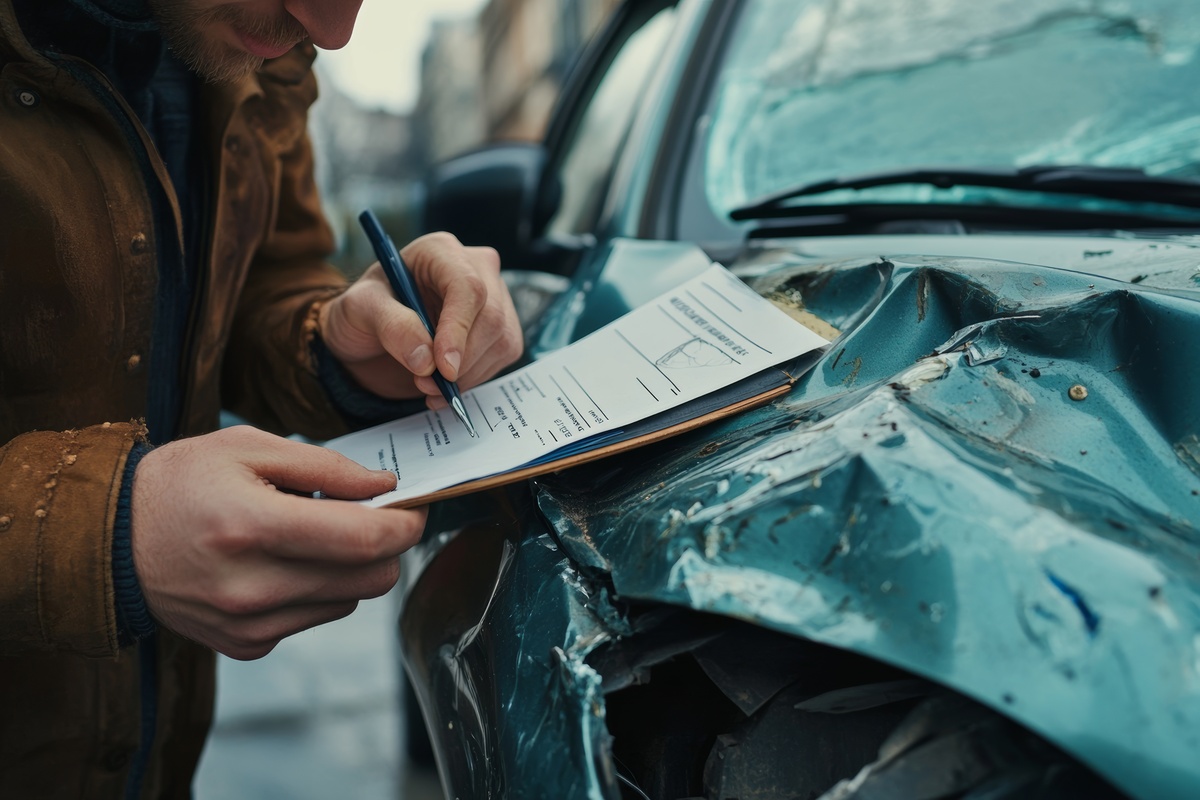
When you’re involved in a car accident in Florida, determining who was at fault might seem straightforward at first glance. However, the reality is often more complex, with multiple factors contributing to the crash and shared responsibility between drivers. Florida’s comparative negligence law recognizes this complexity and provides a framework for fairly distributing fault and compensation among all parties involved in an accident.
Understanding how comparative negligence works can significantly impact the outcome of your car accident claim and the compensation you ultimately receive. At The Eberst Law Firm, we’ve helped countless clients navigate Florida’s comparative negligence system to secure fair compensation even when they bear some responsibility for their accidents.
What Is Comparative Negligence?
Comparative negligence is a legal doctrine that allows accident victims to recover damages even when they are partially at fault for the incident. Under this system, fault is distributed as percentages among all parties involved, and each party’s financial responsibility corresponds to their degree of fault.
Florida follows what’s known as “pure comparative negligence,” which is more favorable to accident victims than the “modified comparative negligence” systems used in many other states. Under pure comparative negligence, you can recover damages even if you are 99% at fault for the accident, though your recovery will be reduced by your percentage of fault.
This system ensures that accident victims aren’t completely barred from recovery simply because they made a mistake that contributed to their injuries. Instead, the law recognizes that accidents often result from multiple factors and allows for fair compensation based on each party’s actual contribution to the incident.
How Fault Percentage Affects Your Compensation
The most direct impact of Florida’s comparative negligence law is how it reduces your potential compensation based on your percentage of fault. If you’re found to be 20% responsible for an accident that caused $100,000 in damages, you would be entitled to recover $80,000 from the other party.
This calculation applies to all types of damages, including medical expenses, lost wages, property damage, pain and suffering, and future medical costs. For example, if your total damages amount to $50,000 and you’re determined to be 30% at fault, you can recover $35,000 from the other driver’s insurance company.
The percentage of fault assigned to each party becomes crucial in determining your final compensation. Even a 10% difference in fault allocation can mean thousands of dollars in your pocket or out of it, making the fault determination process one of the most important aspects of your car accident claim.
Common Scenarios Where Comparative Negligence Applies
Comparative negligence frequently comes into play in various car accident scenarios. Rear-end collisions, traditionally viewed as the fault of the following driver, may involve shared responsibility if the lead driver suddenly braked without reason or had non-functioning brake lights. Similarly, intersection accidents often involve multiple factors, such as one driver running a red light while another was speeding or distracted.
Lane change accidents present another common scenario where fault may be shared. While the driver changing lanes typically bears primary responsibility, the other driver might share fault if they were speeding, following too closely, or failed to allow the lane change when safe to do so.
Left-turn accidents also frequently involve comparative negligence. Although the turning driver usually bears most of the responsibility, the other driver might share fault if they were speeding, ran a red light, or were driving in a way that made the turn appear safe when it began.
Even in cases involving drunk driving, the intoxicated driver doesn’t automatically bear 100% of the fault. If the other driver was also engaging in dangerous behavior like texting or running a stop sign, they may share some responsibility despite the other driver’s intoxication.
How Insurance Companies Evaluate Fault
Insurance companies use various methods to determine fault percentages in car accidents. They examine police reports, interview witnesses, review traffic citations, analyze vehicle damage patterns, and may even hire accident reconstruction experts for complex cases.
Adjusters look for traffic law violations, as these often indicate negligence. However, a traffic citation doesn’t automatically establish fault, and the absence of a citation doesn’t mean a driver wasn’t negligent. Insurance companies consider the totality of circumstances surrounding the accident.
Physical evidence plays a crucial role in fault determination. The location and severity of vehicle damage can reveal important details about how the accident occurred, vehicle speeds, and points of impact. Skid marks, debris patterns, and final vehicle positions all provide clues about each driver’s actions leading up to the collision.
Insurance companies also consider each driver’s credibility and consistency in their accident accounts. Contradictory statements or explanations that don’t align with physical evidence can negatively impact a driver’s credibility and potentially increase their assigned fault percentage.
Protecting Your Interests in a Comparative Negligence Case
When comparative negligence is a factor in your case, protecting your interests becomes even more critical. Insurance companies may try to assign you a higher percentage of fault to reduce their payout, making it essential to gather strong evidence supporting your version of events.
Document everything at the accident scene if you’re able to do so safely. Take photographs of vehicle damage, road conditions, traffic signs, and the overall accident scene. Get contact information from witnesses and ask them to provide written statements about what they observed.
Be careful about what you say to insurance adjusters, including your own. Avoid admitting fault or making statements that could be interpreted as accepting responsibility. Stick to factual descriptions of what happened without speculating about causes or assigning blame.
Consider hiring an experienced car accident attorney early in the process. An attorney can help protect you from making statements that could increase your fault percentage and can work to gather evidence that supports a favorable fault allocation.
The Impact on Settlement Negotiations
Comparative negligence significantly affects settlement negotiations in car accident cases. When fault is disputed, insurance companies often use the uncertainty around fault percentages as leverage to offer lower settlements. They may argue that your potential fault exposure justifies a reduced offer even before fault is formally determined.
Skilled negotiation becomes crucial in these cases. Your attorney can present evidence supporting a lower fault percentage for you while highlighting factors that increase the other party’s responsibility. Expert witnesses, accident reconstruction specialists, and medical professionals may all play roles in building a strong case for favorable fault allocation.
The negotiation process often involves back-and-forth discussions about fault percentages as much as damage amounts. Small changes in fault allocation can have significant financial impacts, making thorough preparation and strong advocacy essential for achieving fair compensation.
Secure Your Rights Under Florida’s Comparative Negligence Law
Don’t let insurance companies unfairly increase your fault percentage and reduce your compensation. Contact The Eberst Law Firm today at (772) 225-4900 or through our contact form to protect your rights under Florida’s comparative negligence law. Our experienced personal injury attorneys understand how to build strong cases that minimize your assigned fault and maximize your recovery.
With years of experience handling complex car accident cases throughout Florida, we know how to gather the evidence needed to support favorable fault determinations and negotiate effectively with insurance companies. We’ll fight to ensure that you receive fair compensation for your injuries and damages, even when fault is disputed, and work tirelessly to achieve the best possible outcome for your case.
